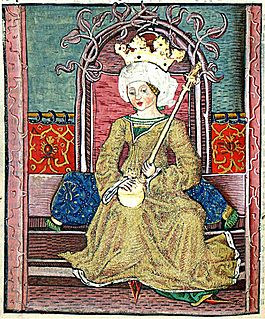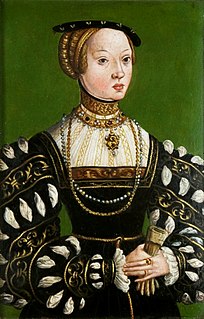The Treaty of Győr (also known as the Treaty of Raab) was concluded between the Hungarian queen dowager and regent, Elizabeth of Bosnia, and Sigismund of Luxembourg in Győr in April 1386.

Elizabeth of Bosnia was queen consort and later regent of Hungary and Croatia, as well as queen consort of Poland.

Sigismund of Luxembourg was Prince-elector of Brandenburg from 1378 until 1388 and from 1411 until 1415, King of Hungary and Croatia from 1387, King of Germany from 1411, King of Bohemia from 1419, King of Italy from 1431, and Holy Roman Emperor from 1433 until 1437, and the last male member of the House of Luxembourg. In 1396 he led the disastrous Crusade of Nicopolis, which attempted to liberate Bulgaria from Ottoman rule. Afterwards, he founded the Order of the Dragon to fight the Turks. He was regarded as highly educated, spoke several languages and was an outgoing person who also took pleasure in the tournament. Sigismund was one of the driving forces behind the Council of Constance that ended the Papal Schism, but which also led to the Hussite Wars that dominated the later period of Sigismund's life.

Győr is the most important city of northwest Hungary, the capital of Győr-Moson-Sopron County and Western Transdanubia region, and — halfway between Budapest and Vienna — situated on one of the important roads of Central Europe. The city is the sixth-largest in Hungary, and one of the seven main regional centres of the country.
Sigismund married Elizabeth's daughter Mary, Queen of Hungary, in 1385, but was unable to immediately assert his jure uxoris right to the crown of Hungary due to King Charles III of Naples's invasion. In April 1386, Sigismund's brother Wenceslaus IV of Bohemia and the large Bohemian army escorted Sigismund to Hungary. Elizabeth was then compelled to sign the treaty by which Sigismund was recognized as Mary's future co-ruler. Pending his coronation, Sigismund was granted the lands once held by Mary's uncle Stephen, Duke of Slavonia, namely Croatia, Dalmatia and Slavonia. Sigismund's Luxembourg cousins, Jobst and Prokop, were permitted to keep Pressburg and the castles between Morava and Váh. [1]

Mary, also known as Maria, reigned as Queen of Hungary and Croatia between 1382 and 1385, and from 1386 until her death. She was the daughter of Louis the Great, King of Hungary and Poland, and his wife, Elizabeth of Bosnia. Mary's marriage to Sigismund of Luxembourg, a member of the imperial Luxembourg dynasty, was already decided before her first birthday. A delegation of Polish prelates and lords confirmed her right to succeed her father in Poland in 1379.
Jure uxoris is a Latin phrase meaning "by right of (his) wife". When a man uses a title of nobility because his wife holds it suo jure, the man is said to hold the title jure uxoris. Similarly, the husband of an heiress could become the legal possessor of her lands. For example, married women in England were legally incapable of owning real estate until the Married Women's Property Act 1882.

Charles the Short or Charles of Durazzo was King of Naples and titular King of Jerusalem from 1382 to 1386 as Charles III, and King of Hungary from 1385 to 1386 as Charles II. In 1381, Charles created the chivalric Order of the Ship. In 1383, he succeeded to the Principality of Achaea on the death of James of Baux.












